By Peter Ricci and Stephanie Sims
When it comes to selling new construction, what statistics and knowledge about the industry will help close the deal? Here are some important current trends and data every agent selling new construction should be aware of in this market.
Immense Practicality
The average American home size, by square foot, has grown steadily from the 1950s to the present day, climbing from 983 square feet to more than 2,000 square feet. That trend, though, could be on the outs, as recent research suggests that homebuyers are now seeking smaller, more practical living places. For instance, according to the 2010 U.S. Census, the average home size peaked in 2007 at 2,277 feet, and has fallen ever since; and, a Trulia survey on home size found that 28 percent of homeowners desired a home smaller than 2,000 square feet. Amidst this period of downsizing, a “tiny house” movement has emerged, advocating smaller and smaller houses.
Demand for Energy Efficiency on the Rise
A recent survey conducted by Harris Interactive on behalf of the Whirlpool Corporation found that 78 percent of consumers are interested in monitoring their household’s energy use. In addition, according to the USBGC, LEED retrofits overtook new projects in 2011, showing a trend towards energy efficiency upgrades by existing structures and businesses.
Housing Relativity
Since 2000, the average floor space for newly built homes in the U.S. is 2,304; by comparison, the averages are 1,475 in Denmark, 1,045 in Spain, and 819 in the U.K., according to the British Architecture Commission. Only Australia comes close at 2, 195 square feet.
Fastest Building Built?
Using new sustainable building trends, China was able to build a 30-story building in just 15 days. Constructed by the Broad Group and situated near the Dongting Lake in the Hunan Province, the 30-story hotel prototype was completely built with prefabricated modules, all done within 360 hours, or 15 days. That’s quite the feat, considering it takes about 30 days just to get a building permit in Chicago!
According to AgentGenius.com, in addition to its quick construction, the building claims to be five times more energy-efficient than traditional structures. The efficiency comes from an internal air quality monitoring system and external solar shading. The prototype has also been tested by the China Academy of Building Research, and is able to withstand a 9.0 magnitude earthquake. The construction was done 90 percent in a factory and 10 percent on-site, producing only 1.0 percent construction waste.
Tiny Houses
No company has capitalized on the “tiny house” trend more fully than the Tumbleweed Housing Company, an extension of the environmental and philosophical concerns of Jay Shafer, a California-based builder and designer. His company offers workshops that train individuals on how to build their own tiny houses, and it also sells a large number of architectural plans for tiny houses of varying sizes and intentions. The smallest home, the XS-House, is just 65 square feet. And while not necessarily the smallest developments, architect and author Sarah Susanka created a development to show that smaller can mean more liveable and energy-efficient. Susanka designed and built the SchoolStreet development and its model home, the Not So Big Showhouse, in Libertyville to fully demonstrate her “build better, not bigger” design principles, including smart design that lives large in less space without sacrificing beauty, comfort or energy-efficient features.
So widespread is the tiny house movement that even IKEA is getting in on the action. A store in Portland, Ore., recently collaborated with building company Ideabox on the “Aktiv,” a 745-square-foot home that costs $86,500 and is shipped fully assembled. IKEA has been manufacturing BoKlok (“smart living”) homes in its native Sweden since 1996.
Building Techniques
When selling new construction, don’t be surprised if the phrases “insulated concrete forms,” “earth brick construction” and “structural insulated panels” keep coming up – these are some new building techniques that are increasingly trending. While traditional style construction is still strong, many builders are taking on these new construction science techniques in order to become more energy-efficient and sustainable in their design and implementation.
In case you were wondering, insulated concrete forms are strong but lightweight interlocking forms with a high energy efficiency rating; earth brick construction is the process of creating bricks out of dirt and building a home with them; and structural insulated panels is a construction technique using sturdy foam cores between OSB over framing.
RIP Living Rooms
One of the more notable changes in new construction floor plans in the past year has been consumers’ attitude toward living rooms. No longer are homebuyers interested in dual living spaces; instead, according to Maria Wilhelm, the general sales manager for Pulte Homes Corporation, they are interested in a much larger living area (basically a family room on steroids) that emphasizes open space. In place of a living room, Pulte has begun offering homes with a sealed-off den, play room or office. “The living room is completely going extinct,” she says.
Luxurious Adaptations
The higher-end buyer, according to Jennifer Lissner of Ranquist Development Group, based in Chicago, also desires open, adaptable building environments. When designing and building properties, Ranquist aims for a clean, modern space, one that can easily refashion itself to the unique tastes of the buyer. Lissner says there are features that Ranquist’s buyers desire, though, chief among them NanaWall windows and large outdoor spaces (especially rooftop decks) with lounge spaces, fireplaces and other finishes.
Modular Homes
People have been saying this for years, but this is the year for modular homes; according to Construction Digital magazine, 2012 holds great prospects for the modular construction industry. Building in controlled indoor environments allows for precision fabrication and high-volume materials that cut costs, reduce construction timelines and maximize efficiencies over stick-built projects.
Headed for Extinction
Some housing trends are becoming obsolete – besides living rooms, as stated earlier, sunrooms, master luxury bathrooms with fancy tubs and showers and even media rooms are all waning in demand, according to a recent survey from the National Association of Home Builders (NAHB). The decreasing need for more rooms in big homes follows the increasing trend that shows buyers now prefer smaller homes. “Builders are focusing on features that add immediate value and make a home more practical,” said Rose Quint, assistant vice president of survey research, economics and housing for the NAHB.
Suburbs Out-Building the City
According to the Daily Herald, in 2011, Elgin, Huntley and Oswego collectively accounted for about 15.4 percent of sales of newly built homes. At that rate, the suburbs seem to have outpaced Chicago, which had 14.3 percent of the region’s new home sales. Other suburbs active with new construction underway include Naperville, Volo, Pingree Grove, Plainfield and Arlington Heights.
The pacesetters, according to Tracy Cross & Associates, include M/I Home’s Mayfair development in Naperville, Blackberry Crossing-West by Ryland Homes
in Montgomery and Ryland’s Talamore-Landmark
in Huntley.
Housing Starts Slowly Starting
Nationally, in 2011, there were 429,000 housing starts compared to 471,000 in 2010 and 445,000 in 2009, according to the NAHB. Interestingly, 70 percent of starts in 2011 were from builders, 16 percent were contractor built, and 11 percent were owner-built.
Top Five Builders
According to a Daily Herald article from February of this year, the top builders in the Chicagoland area include Pulte, headquartered in Hoffman Estates, D.R. Horton, based in Libertyville, K. Hovnanian’s office in Lombard, Lennar Corp., based in Hoffman Estates, and M/I Homes’ office in Naperville.
Smaller House Trend Not Trending Among New Buyers
Even though builders and architects say smaller new construction and floor plans are trending, it seems homebuyers still like several rooms to choose from. In 2011, single-family homes with four or more bedrooms increased from 36 percent in 2010 to 42 percent; the average square footage increased, too, from 2,381 square feet in 2010 to 2,522 square feet in 2011, according to the NAHB. The reasoning for this? According to the NAHB, with a 20 percent down payment, high credit score and well-documented income and employment history required to buy new construction, many first-time buyers were factored out of the equation, and as a result, the market was dominated by buyers who tend to buy bigger than average homes.
Rapidity in Construction
U.S. Concrete recently introduced the Aridus® Rapid Drying Concrete, a ready-mix concrete solution for preventing floor covering failures. An industry-wide problem that costs millions of dollars annually in damage, repair and replacement, floor covering failures often result from moisture, and Aridus® aims to avoid that by drying much faster than conventional concrete mixes (U.S. Concrete states that flooring materials can be installed on the concrete in 30 days or less).
USGBC Launches Green Building Products Database
It will be even easier for builders to build green – the US Green Building Council has partnered with The Home Depot to launch an online products database that features products geared toward residential green building that may also contribute to points and prerequisites for the LEED for Homes program. A Product Finder feature on the site will point users to LEED-compliant products in a range of categories. Currently, more than 2,500 products sold at The Home Depot are listed on the website.
Energy-Efficient and Intelligent Systems
In conjunction with more efficient materials, smarter management systems are being installed in new construction properties to bring homeowners increased energy savings. Coordinating power consumption patterns on city grids, automatically shutting off unused electronics, or intelligently monitoring heating and cooling systems will streamline the economy of future green building projects.
For example, with Nest Labs’ smart thermostat “Nest,” which was designed by a former Apple executive, learns about the homeowners’ comfort levels over time as adjustments are entered into the easy-to-use scheduling program. Temperature can even be controlled remotely through a laptop or mobile phone, and its LCD screen displays when energy is being saved, as well as how much time remains until a new temperature is reached. Compatible with oil, gas electric, radiant, heat pump and forced air systems, Nest is currently offered for $250 – easily recouped in annual energy savings, as the typical home spends over $2,200 a year on heating and cooling expenses alone.
Green is Growing
The amount of new, green, single-family residential construction has increased dramatically — from two percent in 2005 to 17 percent in 2011, according to McGraw-Hill Construction.
Sturdy Paper Countertops
Surely one of the most interesting “green” products on the market, the Squak Mountain Stone by Tiger Mountain Innovations is a countertop/tabletop composed of recycled paper, recycled glass and low-carbon cement. As Karen Kalmek of Green Home Chicago, a West Loop-based design firm that specializes in green interior design, explained, more than 50 percent of the product is made from recycled materials, and the creation process, which involves a fascinating procedure of pouring the wet mixture into large trays and baking it in extreme heat, is a model of efficiency. The product is well known throughout the West coast (Tiger Mountain is based in Seattle), but Kalmek is currently the only Midwest distributor.
A 10-Point System
Green Home Chicago is a company dedicated to, as founder Kalmek put it, the notion that “business can actually make a difference.” Kalmek, who is a native of South Africa and has a bachelors in psychology and a masters in education, started the company five years ago. It follows a 10-point classification system to explain why it sells the products that it does, which includes such reasons as: the product is composed of recycled content; is non-toxic; is locally manufactured; is “cradle to cradle,” meaning it can be used, recycled and then used again without lessening the quality; is artisanal, or handmade; and is vintage, reclaimed or repurposed. The system, Kalmek says, fulfills her purpose for starting the business: “The ‘green’ word is so hard to define, so I decided to define it myself.” Using that methodology, Green Home Chicago carries flooring, cabinets, fabrics and many other items that effectively balance stability, uniqueness and, as the company’s website describes it, “uncommon beauty.”
Modern Efficiency
Ranquist has incorporated several green finishes, many of which begin at the design phase of the properties, Lissner says. Notable examples include: dual-flush toilets, which are installed in all of Ranquist’s single-family homes and multifamily buildings; quartz-surfacing countertops, which use recycled water and are 25 percent post-consumer recycled content; and porcelain tile, which has gradually replaced marble as buyers’ default choice.
Digital Grid-ology
We’re always told how “there’s an app for that,” but the construction sector has been largely neglected amidst a developing landscape filled with crossword puzzles, social networking and vindictive birds. After all, CAD programs all but revolutionized the practice of architecture, so where is construction’s technological leap? PlanGrid, an app by Loupe, Inc., aims to accomplish that by digitizing blueprints for the iPad. From three pages to 30,000, PlanGrid stores its data on a cloud and allows for annotations and instant edits to the documents, streamlining the building process in ways not yet seen.
New Construction vs. Foreclosures
While we need buyers to purchase foreclosures to help stabilize the market, new construction properties may cost buyers less in the long run. Foreclosure calculators (like this one on our website) show buyers how much a foreclosure really is, depending on the amount of money needed for repairs. New construction properties can often be an inexpensive option – especially with special buyer incentives and programs. In addition, according to the Daily Herald, experts are seeing homebuilders build on depressed land and turn stalled developments into more affordable housing; this means there are more townhouses, condos and single-family homes for lower prices.
Heavy (Regulatory) Burden
Regulations are a constant sore spot for the construction industry, and James Inhofe, a Republican Senator from Oklahoma, has introduced a bill in the Senate to address an EPA regulation on lead-based paints that had NAHB Remodelers and trade groups railing against the regulatory agency. Called S. 2148, the bill would modify the Lead: Renovation, Repair, and Painting rule, which requires contractors working on homes built before 1978 to be trained and certified by the EPA on lead-safe work practices before they can legally work on the homes.
Knocking, Knocking on My Green Door
The Michael Yarnell residence, a custom home in Ravenswood designed by Farr Associates and constructed by Goldberg General Contracting, is the highest scoring LEED building ever built, with its permeable pavers, pressed wheat and recycled plastic fencing, paperstone countertops and zero-VOC paints creating 40 percent more energy than it consumes. Though it wasn’t cheap – the four bedroom, two-bath, 2,700-square-foot home reportedly cost $1.6 million to construct – the home generates 18,000 kWh of energy annually while using 12,689 kWh, which earned the homeowners $52,000 in tax credits in 2008-2009 alone. By comparison, the average home in Illinois, according to the U.S. Energy Information Administration, used 9,588 kWh of energy in 2010 at a cost of $1,104.36.
AIA’s Small Projects Awards
With smaller, more open floor plans becoming a trend, the American Institute of Architects started its Small Projects Awards last year to honor high-end design for small spaces and small budgets. Two types of awards were given to winners – citations of merit or honor awards – and the only three entrants to receive honor awards were UrbanWorks Ltd. for its “automobile container,” or garage, in Evanston, Suski Design’s addition to a Glencoe home, and John DeSalvo Design’s Retreat House in Michigan City, Ind.
With last year’s success, AIA expects more submissions for the awards this year, which will be held in June again.
Unemployment and Construction
February also revealed a promising trend for the durations of joblessness. Of the four categories of unemployment – less than five weeks before finding work, six to 14 weeks, 15 to 26 weeks and 27 weeks or more – all areas have decreased, and the “less than five weeks” category is even back to pre-recession levels. In addition, several news outlets reported that 2011 was the first year since 2006 that construction employment was positive, and the first since 2005 with an increase in residential construction employment. In February of this year, construction jobs were down 13,000, according to the latest employment reports, but since January 2011, when construction employment bottomed, the sector has added 98 thousand jobs, according to analyst Bill McBride at Calculated Risk.
2012 – The Year of the Post-Boom?
We know no one is holding their breath and expecting a housing recovery anytime soon, but Barclays Capital analysts said earlier this month they believe this year could be the start of a housing recovery, which in turn, would help the new construction market. Barclays even upgraded the stocks of four homebuilders, including Pulte Group and KB Home, to show its confidence.
“We believe the spring selling season has arrived strongly enough to kick-start a positive feedback loop in housing for the first time since 2005,” analysts said after discussions with top construction company executives, according to HousingWire.com.
Made in America
There has been a push the last couple years for “Made in America” building products, both big and small. On the larger end, ABC News covered a Montana-based economist-turned-builder who, amidst promoting his home that was constructed almost solely from U.S.-manufactured supplies, computed that if every builder in the U.S. were to increase their use of U.S.-made materials by 5 percent, it would create more than 200,000 jobs across the country. Here in Chicago, Wayne Weinke III of Way-Ken Contractors Supply Co., a rent and sell construction equipment company that first opened shop in 1955, has noticed a definite interest in U.S.-produced products, such as shovels, gloves and various hand tools. Weinke does admit, though, that it can be difficult sometimes to find American-made products. He said diamond blades, in particular, are now sold under generic monikers.
Stylish, Affordable and Efficient
Another product that encompasses much of Green Home Chicago’s mission is a locally manufactured chair, which it produces in tandem with a North Shore-based mechanical engineer. Designed using computer software, the chair is laser cut from a single sheet of soy-based, formaldehyde-free wood and flat packed to further increase its efficiency. Sold in two colors (natural veneer and walnut veneer) at two affordable prices ($175 and $235), the chair is Kalmek’s first step in reestablishing manufacturing in Chicago, and she’s now looking to convert some vacant warehouse space for a unique countertop made of recycled glass.
Paint it Green
Kalmek is particularly invested in the line of painting supplies her company carries. Green Planet Paint, a line of eco-friendly paints developed by Meredith Aronson, a professor in anthropology at the University of Arizona with an acute understanding of pigments and ceramics, is not only void of volatile organic compounds, or VOCs, but also all bio-based petrochemicals, a quality Kalmek said separates it from the burgeoning field of “green” paints. In fact, Green Planet Paint products are so clean that they emit negative ions, which improve the air quality in homes by ridding it of pollens, mold spores and dust that often harm small children and those with immune deficiencies. CA.

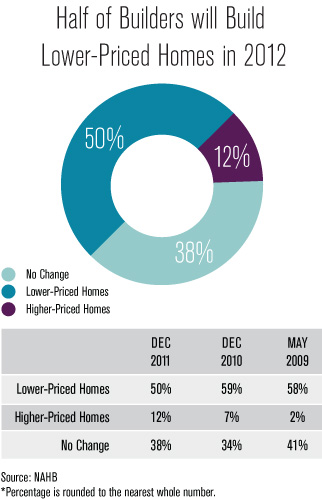
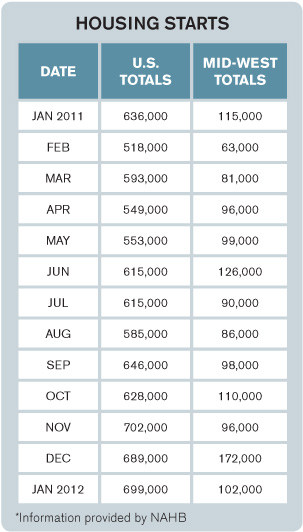
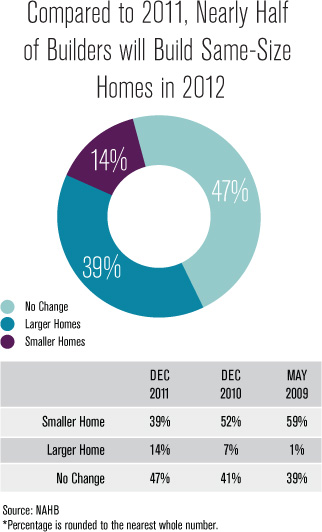
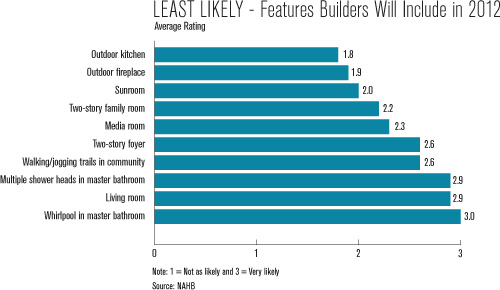
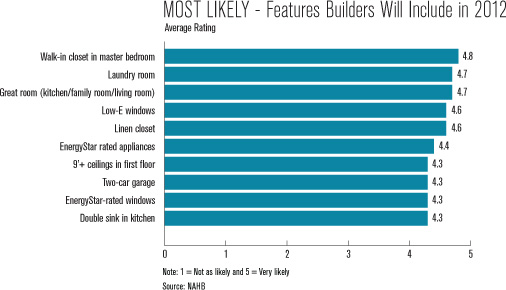
This is an awesome article! So informative and interesting to know, whether one is selling, buying or just staying put. Great to learn what the future may hold in the housing market.